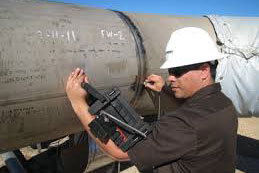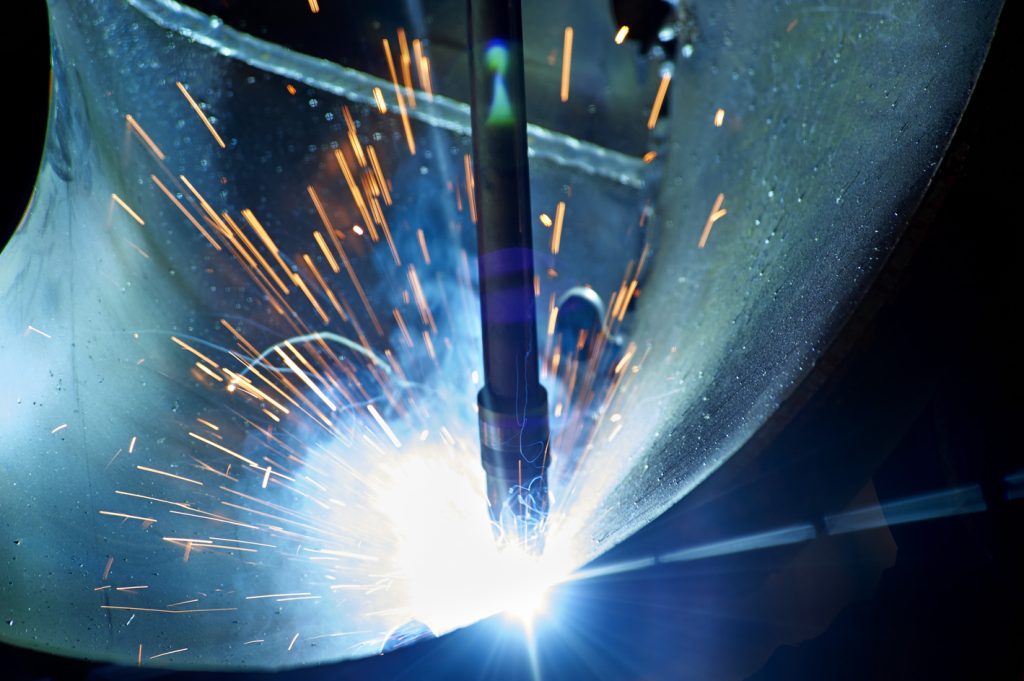Welding Evaluation Demystified: Key Processes, Devices, and the Crucial Role They Play in Maintaining High-Quality Welds
Welding assessment functions as a critical backbone in the guarantee of architectural integrity and quality in welded joints, impacting numerous sectors from construction to production. This procedure is not just a formality; it incorporates essential strategies such as visual evaluations and advanced non-destructive testing methods developed to reveal defects that could compromise safety. With a variety of specialized devices at their disposal, assessors play an important role in maintaining high criteria. Yet, the intricacies of these techniques and their ramifications for high quality assurance stay usually forgotten. What are the key procedures and devices that make sure these standards are maintained?
Importance of Welding Assessment
Making certain the honesty of welded joints is extremely important in various sectors, making the value of welding inspection obvious. The quality of welds straight influences the safety and security, performance, and long life of structures and elements. In markets such as construction, vehicle, aerospace, and manufacturing, any type of failing in bonded joints can cause disastrous consequences, consisting of structural failures, tools breakdown, and loss of life.
Welding inspection serves as a crucial quality assurance procedure, making sure that welds fulfill specified requirements and governing requirements. It recognizes defects such as fractures, porosity, and insufficient blend that might compromise the stamina of the weld. By identifying these issues early, welding assessment can protect against expensive rework, delays, and prospective safety and security dangers.
Furthermore, welding assessment cultivates conformity with sector standards and qualifications, boosting the trustworthiness of companies and their products. It likewise supports constant enhancement by supplying valuable feedback to welding personnel, allowing them to fine-tune their methods and processes.
Eventually, the significance of welding evaluation can not be overstated; it is vital for preserving high-quality welds, ensuring security, and safeguarding investments throughout different industries.

Trick Examination Processes
Efficient welding examination counts on a collection of crucial processes made to assess the quality and integrity of welds. These procedures include both visual and non-destructive screening (NDT) techniques, guaranteeing that any defects are identified prior to they jeopardize structural integrity.
The initial step in the evaluation process is a comprehensive visual examination, which allows inspectors to analyze welds for surface defects such as fractures, damages, and insufficient fusion. Complying with visual checks, numerous NDT strategies may be used, including ultrasonic screening, magnetic particle testing, and radiographic screening. Each method supplies distinct advantages; as an example, ultrasonic testing can detect inner defects, while radiographic screening supplies a permanent document of the weld's internal structure.
Additionally, it is critical to verify compliance with appropriate codes and standards, making sure that the weld fulfills sector specifications. This includes inspecting weld dimensions and positioning, as inappropriate measurements can result in failures under tons.
Essential Tools for Assessment
Frequently using the right tools is crucial for achieving precise welding inspections. A thorough collection of examination devices assists ensure that welds meet strict high quality requirements and specs.
Among the main devices is the visual assessment gauge, which enables examiners to evaluate surface conditions, such as tidiness and surface area finish, directly. Additionally, calipers and micrometers are crucial for determining weld measurements and ensuring they adapt needed tolerances.
For even more thorough analyses, ultrasonic screening (UT) devices is indispensable. This technique makes use of high-frequency sound waves to examine and find interior defects material density. Likewise, magnetic particle screening (MT) and color penetrant testing (PT) are crucial for recognizing surface area and near-surface problems, providing prompt aesthetic signs of possible problems.
Welders need to also be outfitted with firmness testers, which evaluate the mechanical residential or commercial properties of the weld steel and base materials, ensuring they fulfill specified needs. Ultimately, recording findings with electronic examination tools boosts traceability and quality assurance. By utilizing these essential devices, examiners can keep high-grade welds, ultimately contributing to the safety and reliability of bonded structures.
Typical Defects and Their Discovery
Welds, comparable to the backbone of structural integrity in construction and production, can display different flaws that endanger their efficiency and safety and security. Common problems include porosity, cracks, undercut, lack of blend, and slag incorporations (Welding Inspection Gilbert Arizona). Each of these flaws can materialize because of incorrect welding techniques, inadequate material choice, or insufficient preparation

Discovery of these problems can be achieved through various non-destructive testing approaches, consisting of visual examination, ultrasonic testing, and radiographic screening. Each method plays an important duty in recognizing these faults, making sure that the honesty of the weld is preserved and lowering the threat of failing in critical applications.

Best Practices for Quality Assurance
Making certain the best quality of welds is critical for architectural integrity and safety and security, especially in industries where the consequences of failing can be severe. To achieve this, numerous ideal methods for top quality assurance need to be executed throughout the welding process.
First, a durable welding treatment specification (WPS) must be established, describing the essential specifications for every welding operation. This ensures uniformity and adherence to industry criteria. Second, detailed training and certification of welders are necessary; experienced workers are much better geared up to create top notch welds and recognize potential problems.
Regular evaluations must be integrated right into the welding process, utilizing both visual and non-destructive screening (NDT) techniques to detect flaws at an early stage. Normal calibration of assessment tools is important to preserve precision. In here addition, documenting all welding activities, consisting of examinations and rehabilitative actions, develops a deducible document that can be vital for quality assurance.
Final Thought
To conclude, welding assessment offers as a crucial system for guaranteeing the integrity and reliability of welded joints across markets - Welding Inspection Gilbert Arizona. have a peek at this website With the execution of vital assessment processes and the utilization of necessary tools, companies can effectively recognize and attend to possible issues. Adherence to finest techniques in top quality guarantee not just improves safety however likewise guarantees compliance with industry requirements, eventually contributing to the durability and efficiency of elements and frameworks
Welding inspection serves as a vital backbone in the assurance of structural integrity and high quality in welded joints, impacting various sectors from building and construction to manufacturing.Making sure the stability of welded joints is vital in numerous sectors, making the importance of welding evaluation indisputable.Welding inspection offers as Visit This Link an essential high quality control procedure, ensuring that welds fulfill defined criteria and governing requirements. By utilizing these vital devices, examiners can keep top quality welds, inevitably adding to the safety and integrity of bonded structures.
In final thought, welding assessment offers as a crucial system for making certain the stability and integrity of bonded joints throughout industries.
Comments on “How Welding Inspection Gilbert Arizona Can Improve Your Construction and Manufacturing Processes”